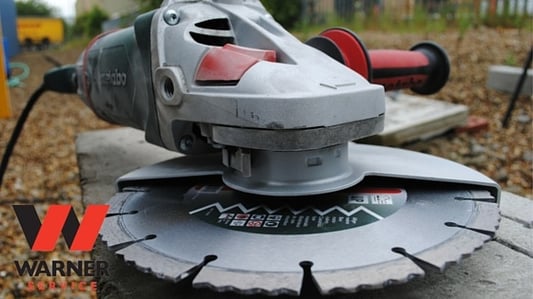
Power tools are undoubtedly awesome. They can cut project times in half, they require less labor than manual tools and they have become so useful in completing larger projects. Though the efficiency is unmatchable, and power tools just look cooler than hand tools, homeowners don’t need to buy every power tool on the shelf. To help you decide which power tools you need for your home, here is Warner Service’s guide to power tools:
- Hammer drill: Over the years, this power tools has lightened up, become cordless and added a few nifty additions (hello, built-in lights), but it’s still a staple to every toolbox. Hammer drills, also known as drivers, are affordable, durable and versatile. They can drill holes, drive screws and power through concrete, making them a must-have for around-the-house projects.
- Oscillating multi-tool: This handy tool has the capabilities to remove grout from tile, scrape away crumbling caulk and sand a floor that is close to its baseboard. The universal connector works with a multitude of accessories, so you can tackle projects big and small.
- Palm sander: Hand sanding with paper is awful. It takes forever and requires the precision of a brain surgeon to get it even. To make things smoother (pun intended), use a power palm sander. This power tool is usually battery-operated and comes with a dust canister to trap those little shavings. Your allergies will thank you.
- Brad nailer: Small brad nails are hard to maneuver manually, which makes this tool essential to home renovations that require these kinds of nails. Its job is to drive the fine nails into walls, wood and other surfaces, and the best part is that homeowners won’t need to cover up the nail with carpenter’s putty because it’s virtually invisible once blasted into the wall. For larger projects like baseboards and crown molding, consider using a finish nailer.
- Wobble work light: This is the beginning of futuristic power tools, and though it’s just to provide lighting, it’s a cool invention. This work light is set on a semi-circular base, so every time a homeowner knocks it over, it bounces back. The floating shock system protects the light bulb, and since it’s cooled and ventilated, it won’t burn out. There’s no set-up required for this land buoy, which can be strung together like a chain of futuristic illumination.
- Reciprocating saw: Saws are extremely dangerous, and manually sawing something can be extra risky. To make the saw job a little safer, purchase a reciprocating saw. Homeowners hold the base handle while the saw head rotates, doing all the work. Use the interchangeable heads to cut openings in walls, rough-cut leather, green wood, rubber, metal, linoleum and plastic.
- Jigsaw: Remember what we said about saws being dangerous? Well, they’re even more dangerous when the project calls for curved cuts and circular patterns. To solve this problem, consider buying a jigsaw. Some models come with an easy blade-changing system, and the size of jigsaws are perfect for beginners who aren’t ready for a heavy-duty band saw.
There’s no reason for DIY homeowners to have a sawzall, air compressor, power vacuum or table saw on-hand because the home improvement projects that require those power tools are far and few between. However if you’re interested in doing a project that calls for those kind of serious power tools, consider renting them from your local hardware store, borrowing them from a friend or contacting a professional to get the job done.
If you have any questions about future home improvement projects or would like to schedule a maintenance check-up, contact Warner Service today.

